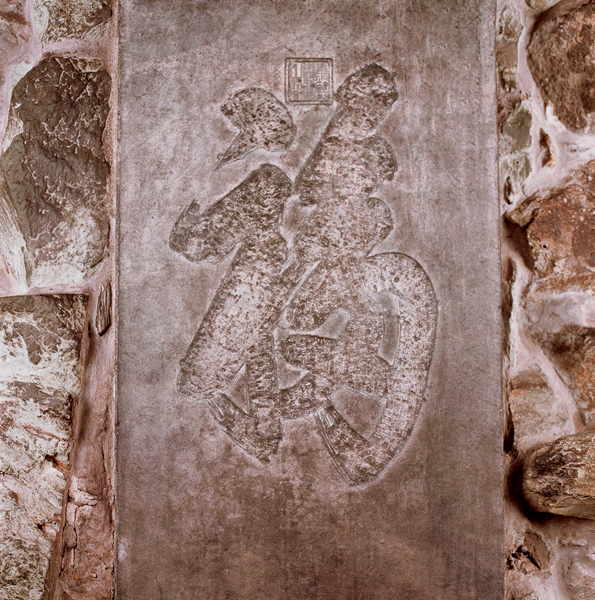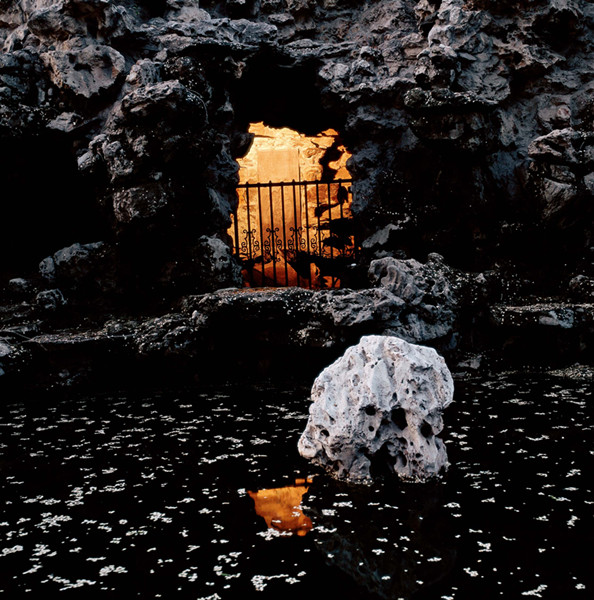

The stone slab carved with the Chinese character for blessing (fu) in Prince Kung's Palace Museum. The character was a transfer of the calligraphy of Emperor Kangxi.
The stele is embedded in Cave of Mysterious Clouds, a cavity formed by lake rocks piled into an artificial hill in the garden of Prince Kung's Palace Museum.
The stele is a 7.9-meter-high stone slab that bears the Chinese character for blessing (fu). It was a transfer of the brushwork of Emperor Kangxi (r. 1662-1722) of the Qing Dynasty (1644-1911).
Rising all the way up to the top of the artificial hill, the stele faces an opening of the cave and stands in front of a Chinese chessboard paved with gravel.

The "Fu" Character Stele faces an opening of the Cave of Mysterious Clouds.
Emperor Kangxi had a good command of calligraphy but seldom wrote inscriptions, making this fu character a rarity and very precious. Moreover, this vigorous and imposing character is ingeniously composed of tian (abundant fields), zi (prolificacy), cai (diverse talents) and shou (longevity), which is hailed as the "Number One fu character under Heaven". It was collected by the imperial family as a treasure of the Qing Dynasty, indicating a longing for blessings and longevity.